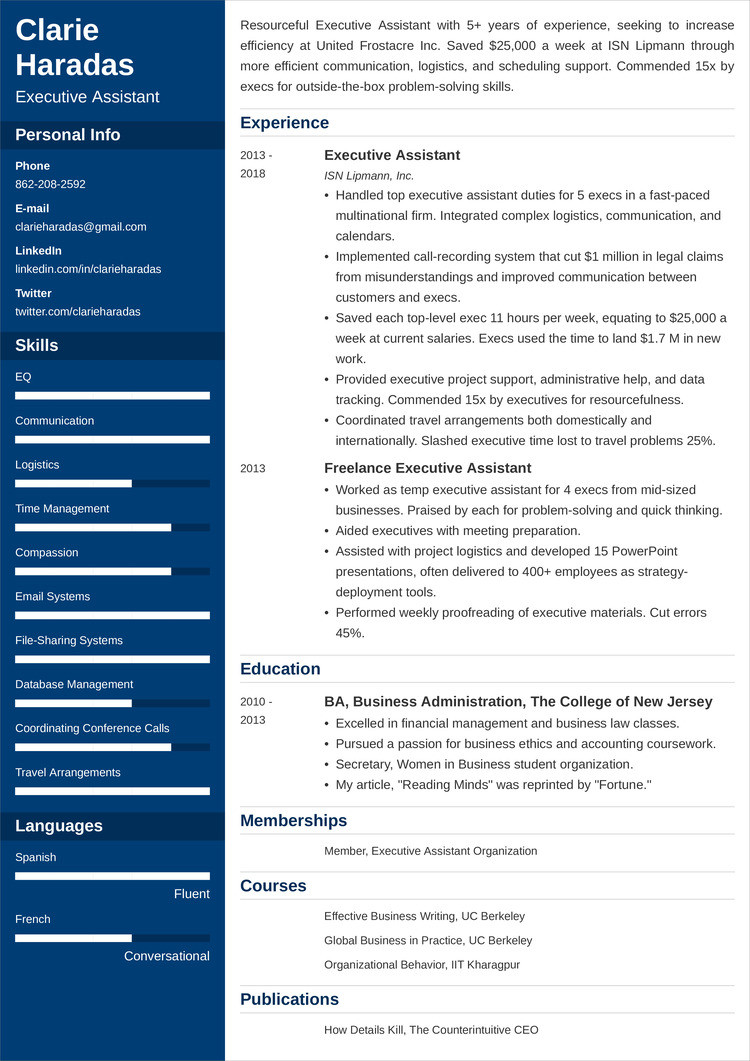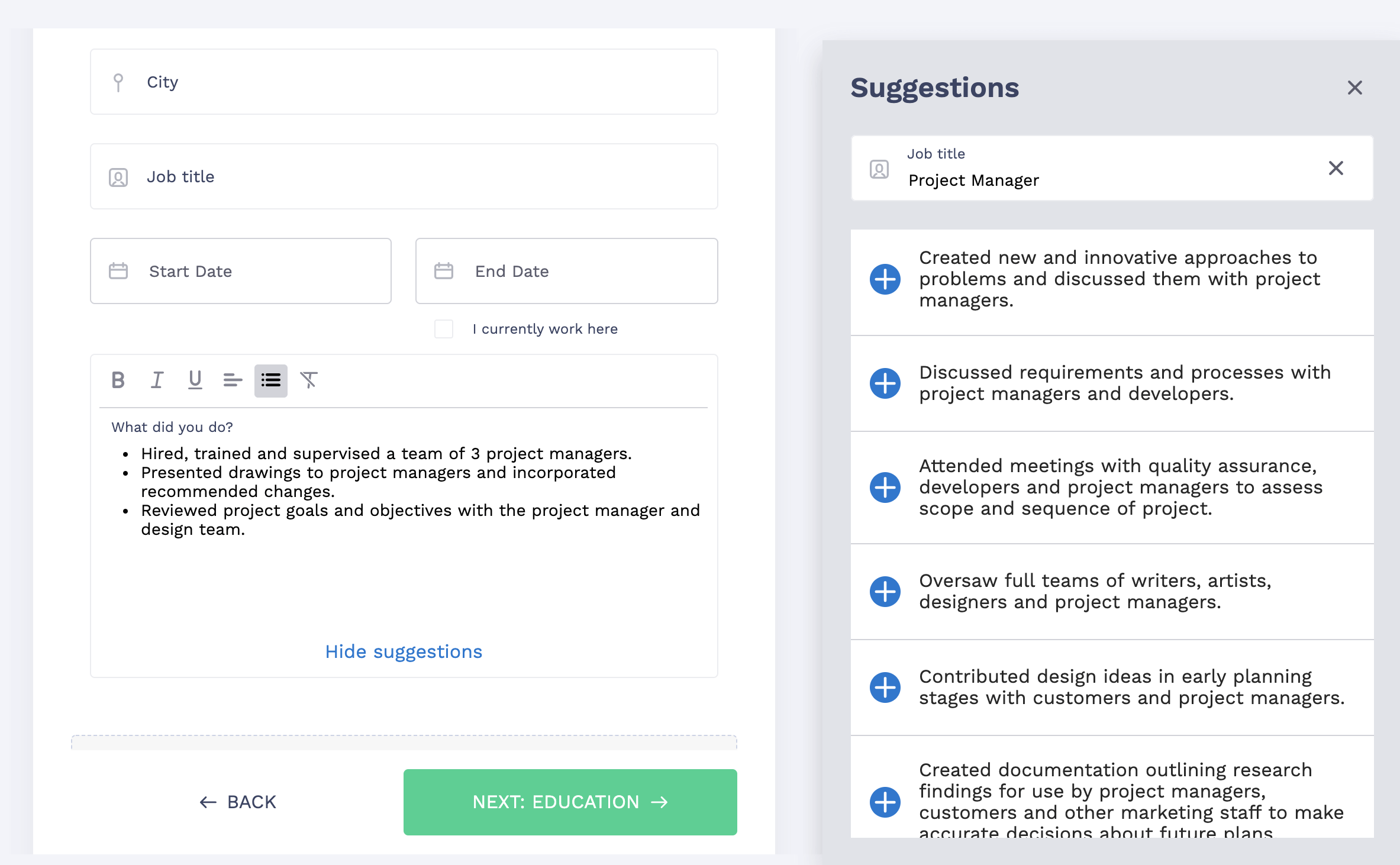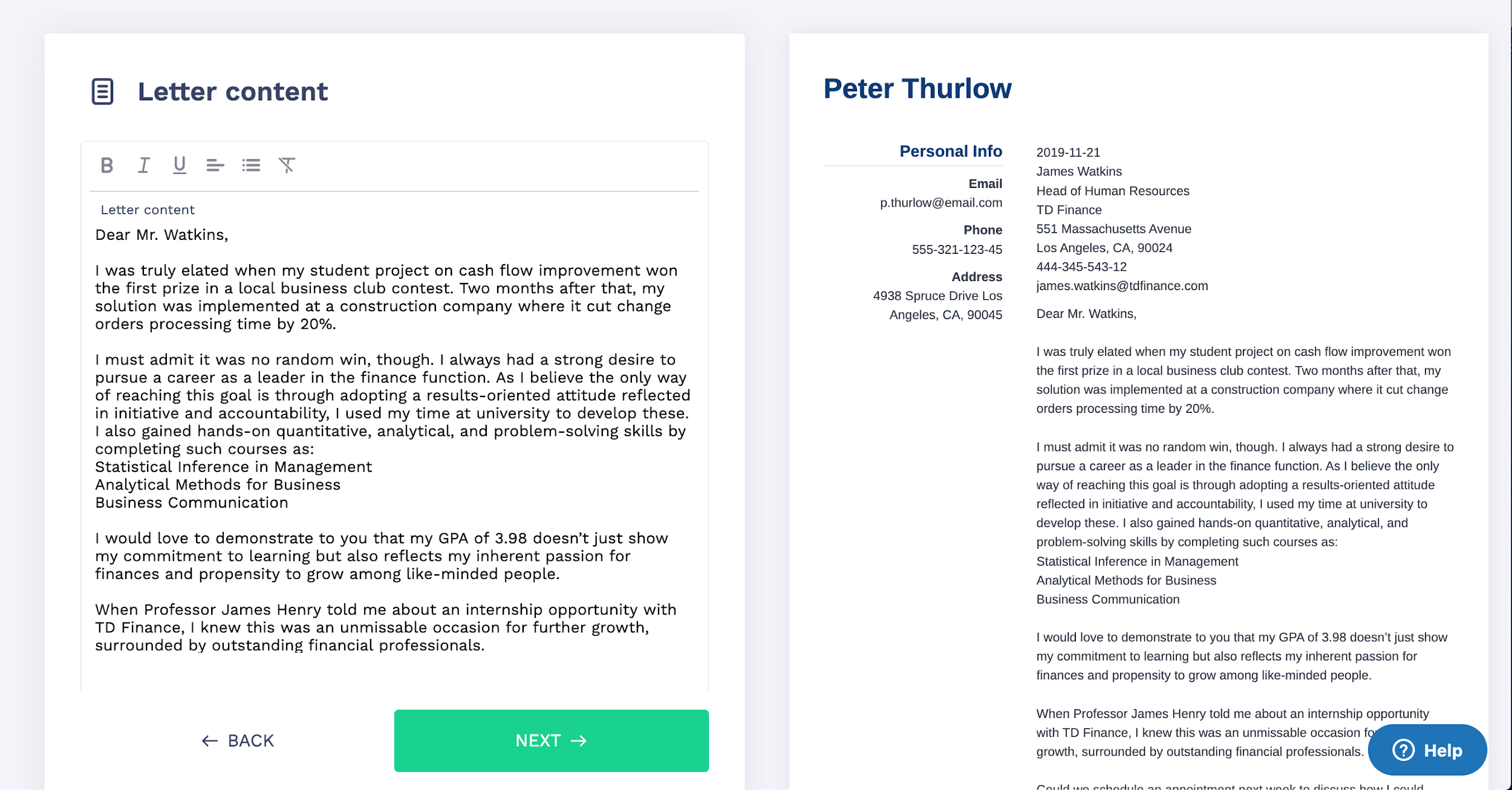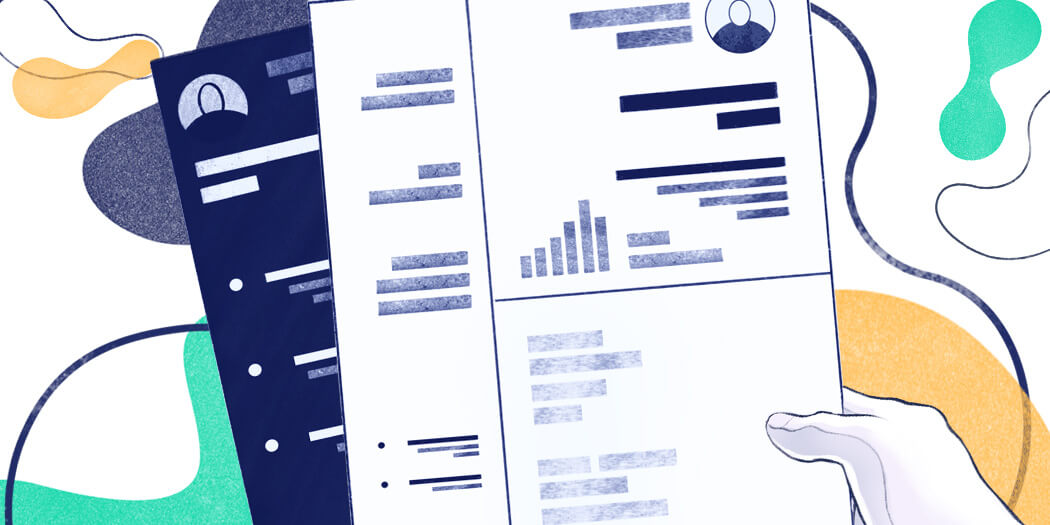
How to Tailor a CV? Targeted CV Examples & Template
A targeted CV works because it’s personalised to the job description and the company. In this article, you’ll learn how to tailor your CV to get jobs.

Christian Eilers
Career Expert
There are three recruitment documents every job seeker should be familiar with:
A CV, a cover letter, and a resume.
While the first two are rather well known to most, the last one tends to be confusing. All the more so as it refers to something different in various countries.
Not to worry.
We’ll show you exactly what a CV is.
In this guide you’ll learn:
Save hours of work and get a CV like this. Pick a template, fill it in. Quick and easy. Choose from 21 CV templates and download your CV now.

What users say about Resumelab:
I had an interview yesterday and the first thing they said on the phone was: “Wow! I love your CV.”
Patrick
I love the variety of templates. Good job guys, keep up the good work!
Dylan
My previous CV was really weak and I used to spend hours adjusting it in Word. Now, I can introduce any changes within minutes. Absolutely wonderful!
George
Here’s a curriculum vitae definition:
The “CV” abbreviation stands for curriculum vitae which means “course of life” in Latin. In the US and Canada, a CV refers to a recruitment document detailing your academic and employment history, along with your skills and achievements.
In contrast to CVs, CVs can be very extensive and include detailed lists of your academic awards, grants, scholarships, publications, research projects, or coursework.
This is why a CV is a standard document when you’re pursuing a career in academia. Not so much so when seeking employment in a non-academic role.
A typical CV form can consist of such sections as:
If you’re looking for more detailed information, as well as CV examples and templates, head straight to our guide on how to make a US curriculum vitae for academic positions.
The ResumeLab builder is more than looks. Get specific content to boost your chances of getting the job. Add job descriptions, bullet points, and skills. Easy. Improve your CV in our CV builder now.

Here’s the thing—
The definition of a CV differs depending on geography.
As we’ve already established, in the US and Canada a CV means a recruitment document you’d normally use when applying for academic positions as well as grants, fellowships or scholarships.
The situation looks different in Europe and New Zealand, though.
In these regions, a curriculum vitae, or CV, refers to a document that’s very much like an American resume.
In other words:
In Europe and New Zealand, a CV is a document that briefly outlines your work experience, skills, education, and professional achievements, and you use it to apply for regular positions.
So even though in these countries the word “CV” isn’t used at all—
A United Kingdom curriculum vitae will be very much like an American resume, both in terms of its function and form.
In fact—
You can learn the ins and outs of writing a job-winning CV from our dedicated guide.
In other anglophone countries such as South Africa and Australia, both terms CV and resume are used interchangeably to refer to a document similar to a UK CV.
Expert Hint: Check out our collection of CV writing guides for 50+ professions. Each guide comes with a CV example and template you can copy and adjust for your needs.
If you wish to learn more about the CV vs. Resume difference, we have a separate in-depth guide explaining each and every discrepancy.
And obviously—
To give your career a serious boost and improve your chances of landing a job make sure your cover letter is nothing short of riveting.
Double your impact with a matching CV and cover letter combo. Use our cover letter builder and make your application documents pop out.

Here’s all you need to know about what a CV is:
Do you have any other questions about what a CV is? Would you like to share your opinion on the subject? We’re always happy to hear from you. Give us a shout out in the comments below!
At ResumeLab, excellence lies at the heart of our values, underpinning our promise to provide outstanding career resources. Our team of career experts meticulously assesses each article in line with our editorial guidelines, guaranteeing our content's high quality and dependability. We consistently engage in original research, illuminating the nuances of the job market and earning acclaim from various influential news outlets. Our commitment to delivering professional career advice draws millions of readers to our blog annually.

A targeted CV works because it’s personalised to the job description and the company. In this article, you’ll learn how to tailor your CV to get jobs.

Christian Eilers
Career Expert
![Perfect CV: How to Make a Great CV in 6 Steps [Guide]](https://cdn-images.resumelab.com/pages/perfect_listing_uk.jpg)
A perfect CV is one that will land you an interview by convincing the recruiter you’re perfect for the role. Don’t know how to write one? We do, and we’re about to show you.

Maciej Duszynski
Certified Professional Resume Writer, Career Expert

If you’re looking for a free CV template for your next CV, you’re right where you need. Word, Google Docs, InDesign CV templates. We have them all. And much more.

Maciej Duszynski
Certified Professional Resume Writer, Career Expert